Mastering the Perfect Butter Basted Steak: Achieve Steakhouse Quality at Home
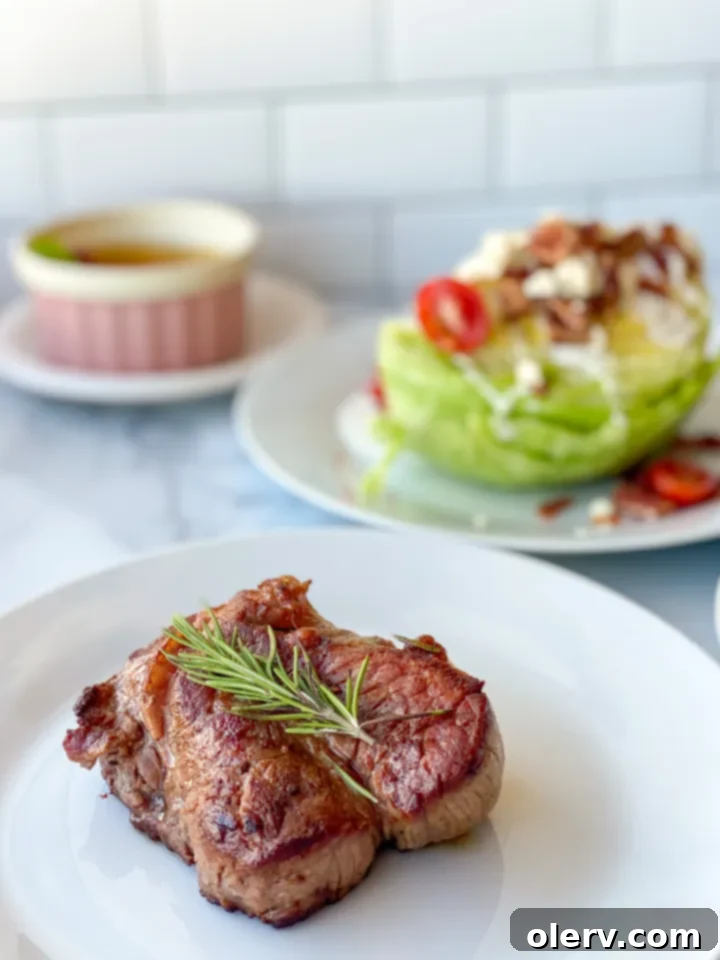
Have you ever dreamt of recreating that exquisite steakhouse experience in your own kitchen? The kind of steak that boasts a perfectly seared, golden-brown crust, a tender, juicy interior, and a flavor profile that dances on your palate? Many believe achieving such culinary excellence at home is daunting, but it’s far simpler than you might imagine. This guide will walk you through the secrets to preparing a truly exceptional **Butter Basted Steak** in a cast-iron skillet, using only a handful of simple ingredients and techniques. It’s the most flavorful and arguably the easiest way to make a steak that rivals your favorite restaurant.
The magic happens when a high-quality, thick-cut steak is expertly seasoned, seared to perfection, and then gloriously basted with rich butter infused with aromatics. This process creates an unparalleled depth of flavor and texture that will impress even the most discerning steak connoisseurs. Forget complex steps and intimidating jargon; we’re breaking down the art of the perfect pan-seared steak into easily manageable actions. From selecting the right cut to the crucial resting period, every detail contributes to a succulent, mouth-watering result. Prepare to transform your home cooking and savor a steak that’s truly unforgettable.
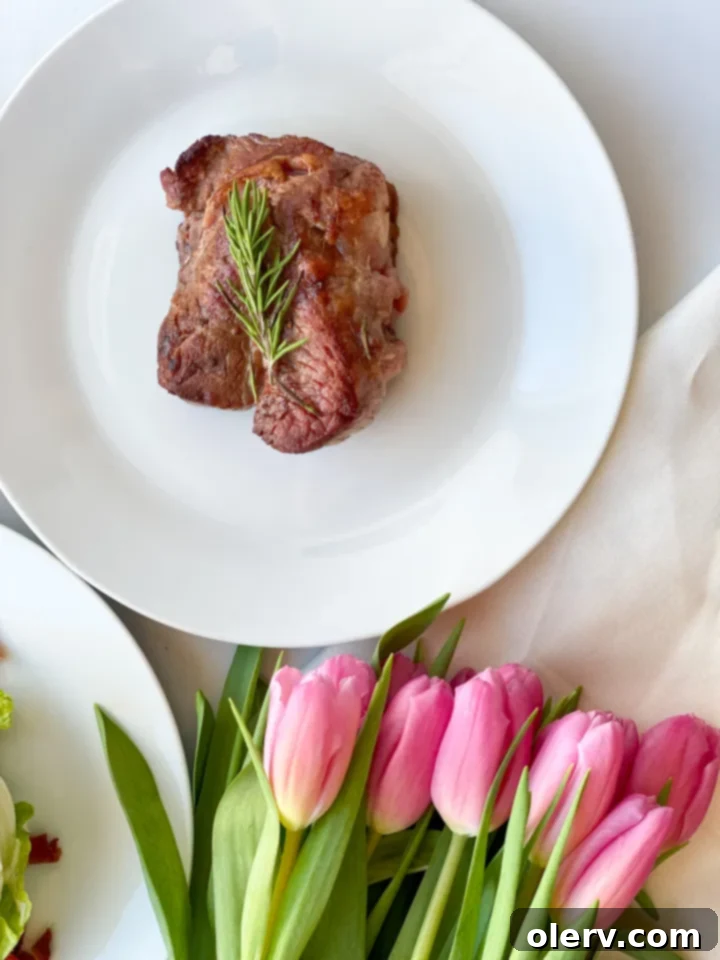
The 5 Simple Steps to a Perfect Pan-Seared Steak
Cooking a restaurant-quality steak at home, especially a delicious **butter-basted steak**, can be broken down into five fundamental and surprisingly straightforward steps. Mastering these will elevate your steak game significantly.
- Season: Prepare your steak for maximum flavor.
- Sear: Create that irresistible, deep-brown crust.
- Baste: Infuse richness and moisture with butter and aromatics.
- Rest: Allow juices to redistribute for ultimate tenderness.
- Carve: Slice expertly for presentation and texture.
It truly is that easy! Many home cooks shy away from preparing steak because they fear overcooking it or simply “messing it up.” However, when you understand these core principles, cooking a perfect steak becomes a relatively easy and incredibly rewarding culinary endeavor.
This butter-basting method, often seen in high-end steakhouses, is designed for success. The butter not only adds an incredible depth of flavor but also contributes to an exquisitely tender texture. We’ll delve into each step to ensure you become a steak-cooking pro.
Step 1: The Art of Seasoning Your Steak
Proper seasoning is the first and most crucial step in building flavor. Don’t be shy with your salt and pepper; remember, a thick steak needs a generous hand. Use a good quality kosher salt or flaky sea salt, which adheres well and creates a beautiful crust. Freshly ground black pepper is always superior to pre-ground. For an even better result, consider dry-brining your steak by seasoning it well an hour or two before cooking, or even overnight in the refrigerator uncovered. This allows the salt to penetrate deeply and helps draw moisture from the surface, promoting a better sear. Always bring your steak to room temperature for at least 30-60 minutes before cooking to ensure it cooks evenly.
Step 2: Mastering the Sear for a Flawless Crust
The sear is where the magic of the Maillard reaction happens – the chemical process that gives seared foods their distinctive flavor and appetizing brown color. For this, a **heavy cast-iron skillet** is non-negotiable. Its ability to retain and distribute heat evenly is superior. Preheat your cast iron skillet over high heat until it’s smoking hot but not visibly smoking. Add a high smoke point oil like vegetable, canola, or grapeseed oil, just enough to coat the bottom. When the oil shimmers, carefully place your seasoned steak in the pan. Resist the urge to move it! Let it cook undisturbed for 3-4 minutes per side to develop a deep, golden-brown crust. Flipping often (every 30-60 seconds after the initial sear) can actually lead to a more even cook and better crust development, a technique preferred by many professional chefs.
Step 3: The Indulgent Butter Basting Technique
Once your steak has developed a good sear on both sides, it’s time for the basting. Reduce the heat slightly to medium, then add cold butter (preferably unsalted) to one side of the skillet. The butter should melt almost immediately. Now, here’s the fun part: using a large spoon, tilt the pan slightly and continuously spoon the hot, melted butter over the top surface of the steak. This process coats the steak in flavorful fat, ensuring an even, golden crust and infusing it with incredible richness and moisture. This is also the perfect time to add aromatics like fresh rosemary sprigs, crushed garlic cloves, or thyme sprigs to the butter. These flavors will infuse into the basting liquid and seep into the steak, adding complex, herbaceous notes. Continue basting and flipping until your desired doneness is reached.
Step 4: The Crucial Rest for Ultimate Juiciness
This step is often overlooked but is absolutely critical for a tender and juicy steak. Once your steak reaches your desired internal temperature (we’ll discuss temperatures next), remove it from the pan and transfer it to a cutting board or a rimmed baking sheet. Tent it loosely with foil and let it rest for at least 5-10 minutes. During cooking, the muscle fibers contract, pushing the juices to the center of the steak. Resting allows these juices to redistribute throughout the meat, resulting in a more tender, flavorful, and less dry steak when sliced. If you cut into it too soon, all those precious juices will run out onto your board.
Step 5: Expert Carving and Presentation
After resting, your perfect steak is ready for carving. Always slice the steak against the grain. This means cutting perpendicular to the direction of the muscle fibers. Cutting against the grain shortens these fibers, making each bite much more tender and easier to chew. Arrange the slices on a warm serving platter, and don’t forget to drizzle any accumulated pan juices (from the resting board) over the top. Garnish with a fresh sprig of rosemary or a sprinkle of flaky sea salt for an elegant touch. Now, dig in and savor your masterpiece!
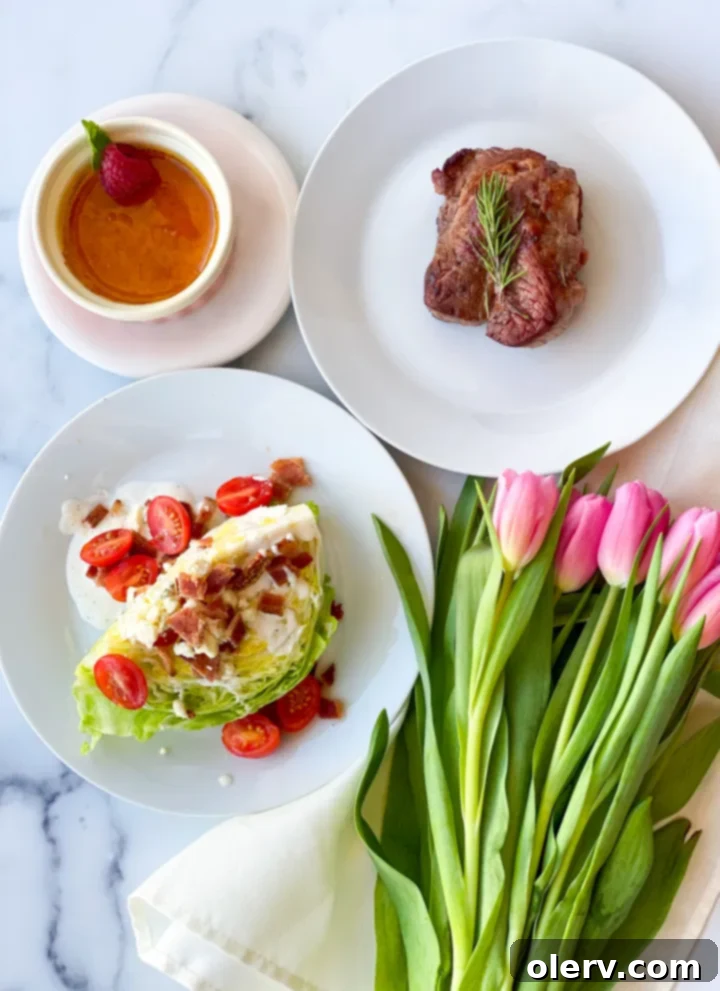
Choosing the Right Steak for Basting Success
The foundation of any great steak meal starts with selecting the right cut of meat. For the butter-basting method, the thickness of your steak is paramount. You want to look for a piece of meat that is at least one inch thick, but ideally 1.25 to 1.5 inches. This thickness allows for the development of a beautiful, deeply caramelized crust without overcooking the interior. Thin steaks simply won’t have enough time to form that desirable crust before reaching an overcooked state.
You have a variety of excellent cuts to choose from for this cooking method, each offering a unique flavor and texture profile:
- New York Strip Steak: This is a personal favorite, often featured in these pictures. It boasts a good balance of tenderness and robust beefy flavor, with a nice strip of fat on one side that renders beautifully.
- Ribeye Steak: Known for its exceptional marbling (flecks of fat distributed throughout the meat), the ribeye delivers a supremely juicy and rich flavor. The fat renders during cooking, essentially self-basting the steak from within.
- Tenderloin (Filet Mignon): The most tender cut, albeit with less fat and thus a milder beef flavor. Basting helps immensely to add richness and a great crust to this lean cut.
- T-Bone or Porterhouse Steaks: These cuts offer the best of both worlds, featuring a New York Strip on one side and a tenderloin on the other, separated by a T-shaped bone. The bone adds flavor and helps keep the steak moist.
Regardless of the cut you choose, look for good marbling, which indicates a flavorful and tender piece of meat. High-quality beef from a reputable butcher or grocery store (like the New York Strip from Trader Joe’s used here) makes a significant difference.
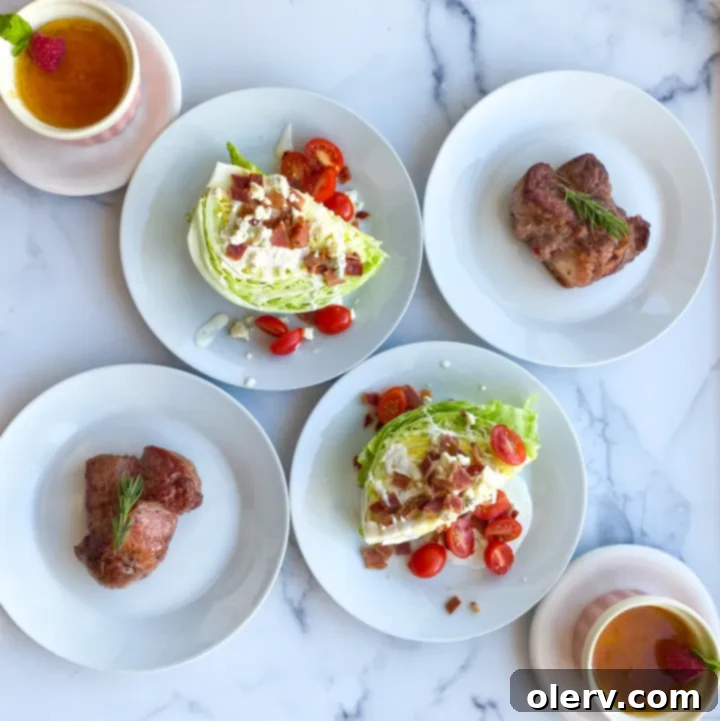
Essential Ingredients for an Unforgettable Butter Basted Steak
The beauty of this **butter-basted steak** recipe lies in its simplicity. You don’t need a pantry full of exotic spices to create a steakhouse-quality meal. The star of the show, beyond the steak itself, is undeniably the butter. Butter is used generously to baste the steak, providing an ongoing bath of hot, flavorful fat that continuously coats the meat. This technique is a hallmark of professional restaurant kitchens because it guarantees an incredibly even, rich, and golden crust, while simultaneously infusing every fiber of the steak with irresistible buttery flavor.
At its core, all you truly need to make a spectacular butter-basted steak are three primary ingredients:
- **High-Quality Steak:** As discussed, a thick cut is key.
- **Unsalted Butter:** This allows you to control the seasoning precisely.
- **Fresh Rosemary Sprigs:** Rosemary imparts a wonderful, aromatic, earthy flavor that beautifully complements beef.
That’s right, just three ingredients to transform a simple cut of meat into a culinary delight! The simplicity ensures that the natural, rich flavor of the beef truly shines through, enhanced by the decadent butter and fragrant rosemary.
Of course, this recipe is incredibly versatile. If you wish to expand the flavor profile, feel free to add other aromatics like smashed garlic cloves or fresh thyme sprigs to the basting butter. Many also enjoy a pinch of onion powder or a dash of paprika in their initial seasoning blend. But to keep things minimal, easy, and focused on showcasing the steak’s natural goodness, the core three are absolutely sufficient and consistently deliver an exceptional result. A delicious, perfectly pan-seared steak, swimming in savory butter, is just minutes away from your plate!
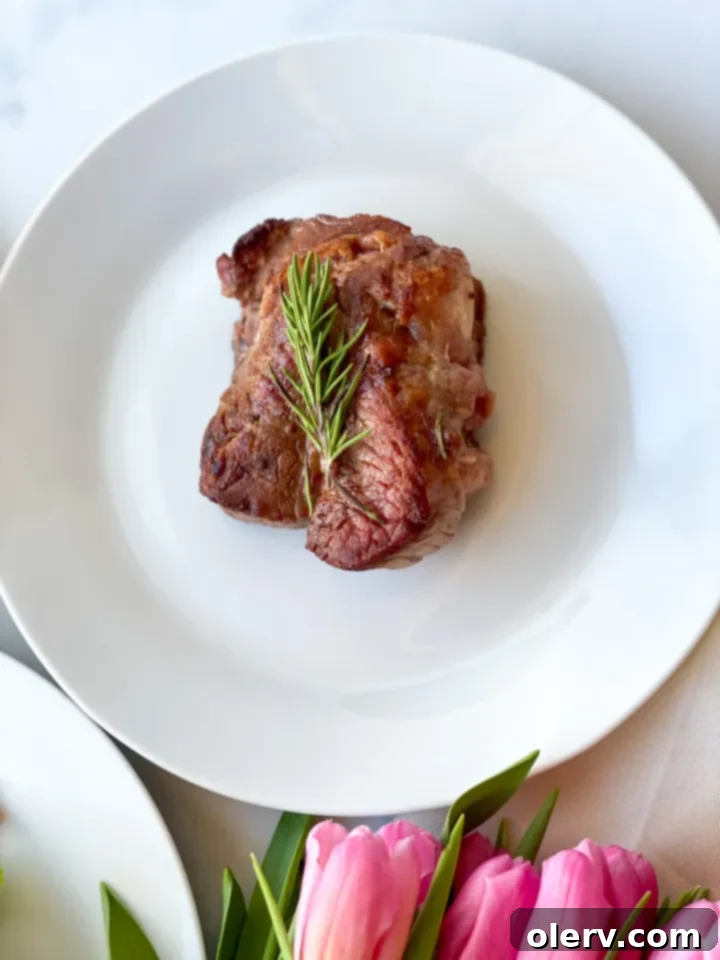
Achieving Perfect Doneness: A Temperature Guide
Cooking steak to your preferred level of doneness is crucial for a truly enjoyable experience. The best way to ensure accuracy is by using a reliable instant-read meat thermometer. Remember that the internal temperature of the steak will continue to rise by a few degrees even after it’s removed from the heat (this is called carryover cooking), so it’s always best to pull it off the heat just before it reaches your target temperature.
Here’s a general guide for internal temperatures, measured at the thickest part of the steak:
- Rare: 120-125°F (49-52°C) – Cool red center.
- Medium-Rare: 130-135°F (54-57°C) – Warm red center (often considered the ideal for many cuts).
- Medium: 135-140°F (57-60°C) – Warm pink center.
- Medium-Well: 145-150°F (63-66°C) – Slightly pink center.
- Well-Done: 150°F+ (66°C+) – Little to no pink.
For a truly **steakhouse-quality steak**, aiming for medium-rare is often recommended as it offers the best balance of tenderness, juiciness, and flavor. Practice and a good thermometer will quickly make you an expert at hitting your desired doneness every time.
Expert Tips for Your Best Steak Ever
To ensure every butter-basted steak you make is a resounding success, keep these expert tips in mind:
- Pat It Dry: Before seasoning, thoroughly pat your steak dry with paper towels. Excess moisture on the surface will steam the meat instead of searing it, preventing that coveted crispy crust.
- Don’t Crowd the Pan: If cooking more than one steak, ensure there’s enough space in the skillet. Overcrowding will lower the pan’s temperature and lead to steaming rather than searing. Cook in batches if necessary.
- High Heat is Key (Initially): Start with a very hot pan to get that initial, hard sear quickly. Once basting, you can reduce the heat slightly to prevent the butter from burning.
- Resist Pressing: Don’t press down on the steak with your spatula. This squeezes out precious juices, leading to a drier steak. Let the pan do its work.
- Flip Often: While traditional wisdom often says to flip once, many chefs advocate for flipping every 30-60 seconds after the initial sear. This technique can lead to a more even cook and a more uniform crust.
- Serve Immediately (After Resting): Once rested and carved, serve your steak right away to enjoy it at its best temperature and texture.
- Pair with Simple Sides: A perfect steak needs complementary sides that don’t overpower it. Think roasted asparagus, creamy mashed potatoes, or a fresh green salad.
If you give this recipe a try and create your own amazing **Butter Basted Steak**, I’d absolutely love to hear about it! Leave a comment, rate the recipe, or even better, snap a photo and tag it with **@TheAlexDaynes** on Instagram or Pinterest! Seeing what you’ve cooked always makes my day!
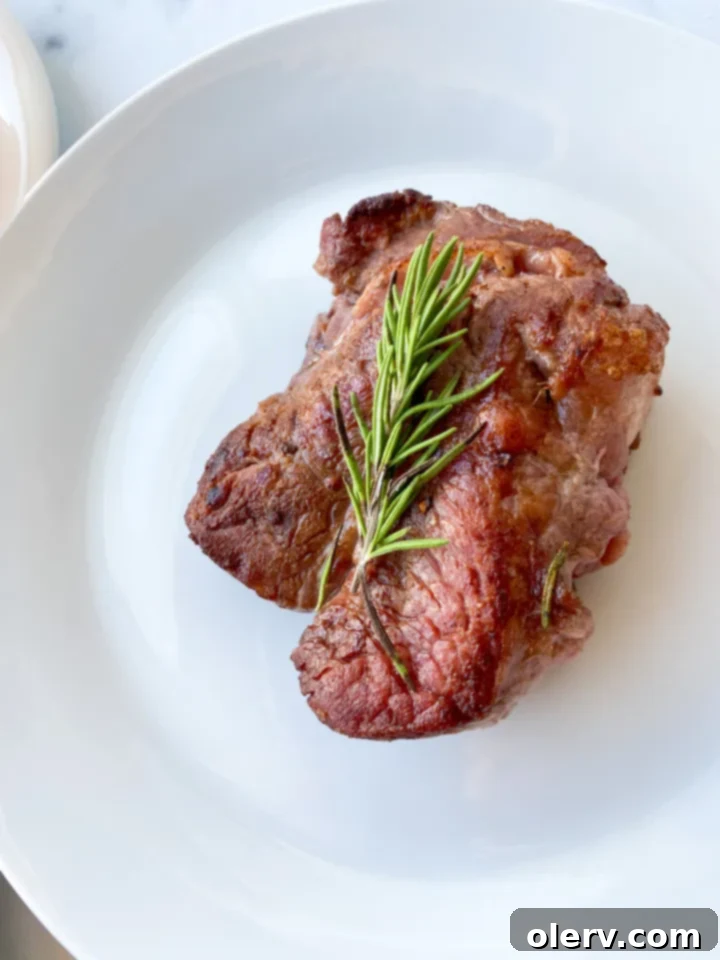
LIKE THIS RECIPE AND WANT TO SAVE IT FOR LATER? PIN IT TO PINTEREST HERE!
Butter Basted Steak
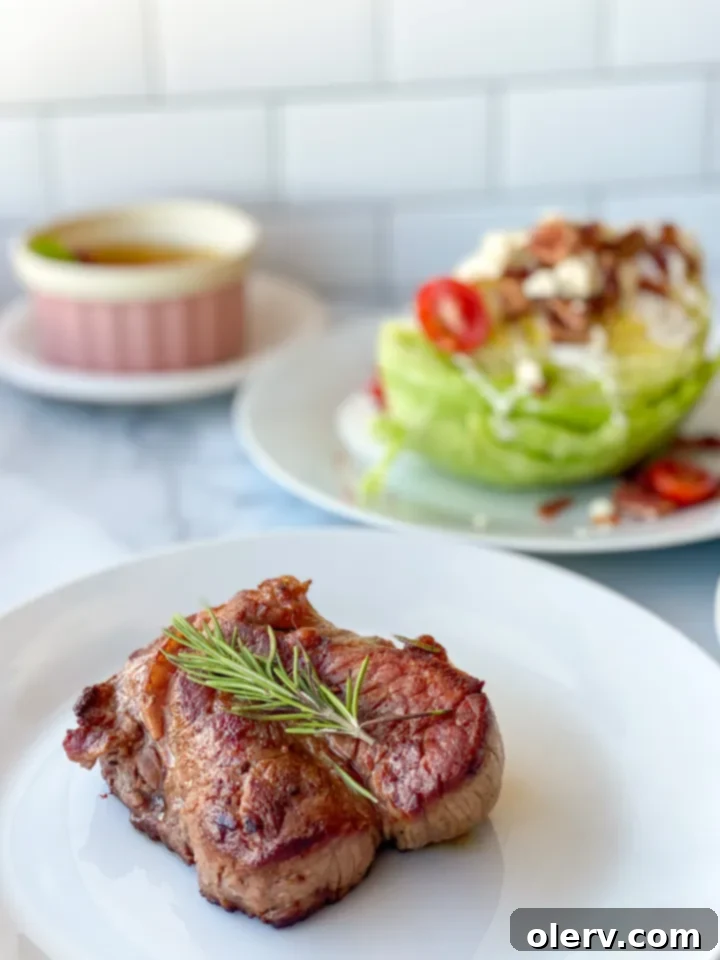
Discover how to make steakhouse-quality butter-basted steak at home with just a few simple ingredients and a cast-iron skillet. This recipe promises the easiest and most flavorful way to prepare a perfectly seared, juicy steak.
Ingredients
- 2 strip steaks, about 1 to 1.5 inches thick
- 4 Tablespoons unsalted butter
- 2 fresh rosemary sprigs (plus optional garlic cloves or thyme)
- 1 Tablespoon vegetable oil (or other high smoke point oil)
- Salt & freshly ground black pepper to taste
Instructions
- Prepare & Season Your Steak: Bring steaks to room temperature for 30-60 minutes. Pat dry with paper towels, then generously season all sides of the steak with salt and pepper.
- Sear for a Perfect Crust: Heat a large (10- or 12-inch) heavy cast-iron skillet over high heat until very hot, almost smoking. Add the vegetable oil to the skillet and carefully tilt to coat the surface. Add the seasoned steaks to the skillet. Cook, flipping every 30-60 seconds, until a deep, golden crust forms on both sides (3–4 minutes per side for initial sear).
- Baste with Butter & Aromatics: Reduce heat to medium. Add the butter (and optional aromatics like rosemary, crushed garlic, or thyme) to one side of the skillet. The butter should melt immediately. Using a large spoon and an oven mitt to tilt the pan, continuously baste the steak by spooning the hot, melted butter over the top. Continue basting and flipping until the steak reaches your desired internal temperature (e.g., 130-135°F for medium-rare, see temperature guide above), about 7–9 minutes total cook time for 1-inch thick steaks.
- Rest & Carve Your Masterpiece: Remove the pan from the heat. Transfer the steak to a rimmed baking sheet or cutting board to rest for 5-10 minutes, tented loosely with foil. This allows the juices to redistribute for maximum tenderness and flavor. Slice the steak against the grain, transfer to a serving platter, and drizzle with any accumulated pan juices. Garnish with the crispy rosemary sprig if desired.
Recommended Products
As an Amazon Associate and member of other affiliate programs, I earn from qualifying purchases.
- Cast Iron Skillet
